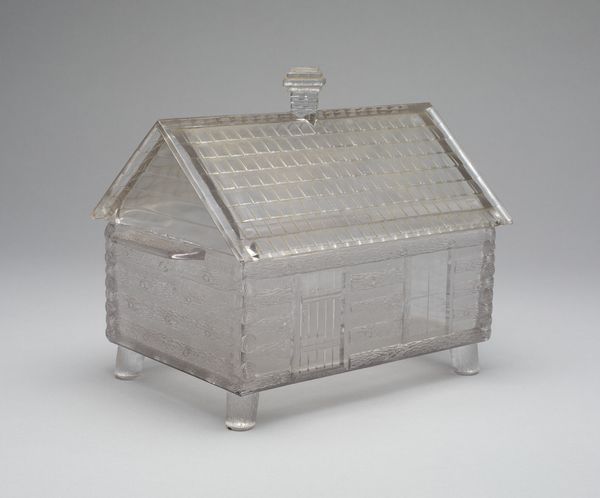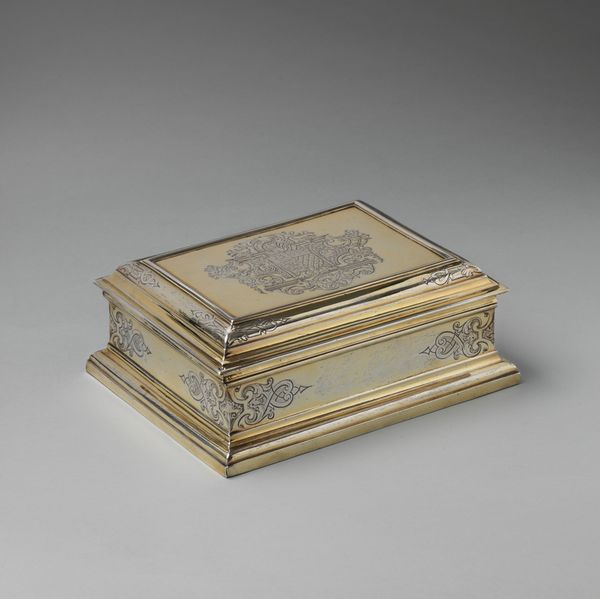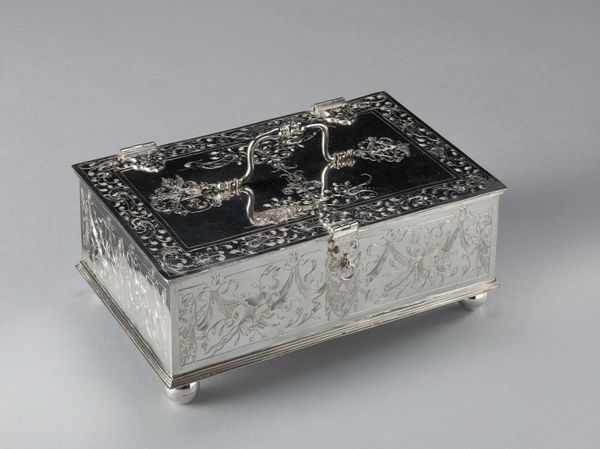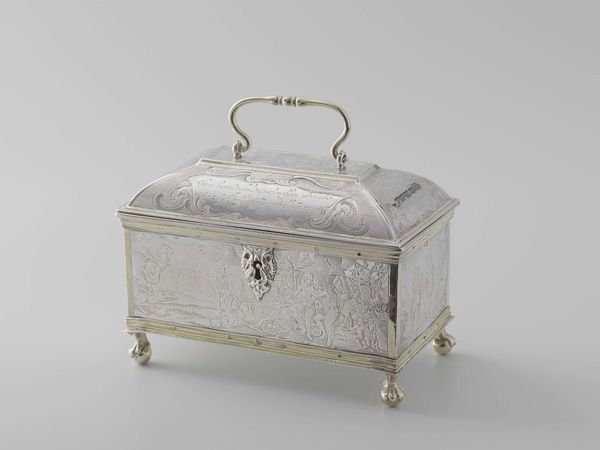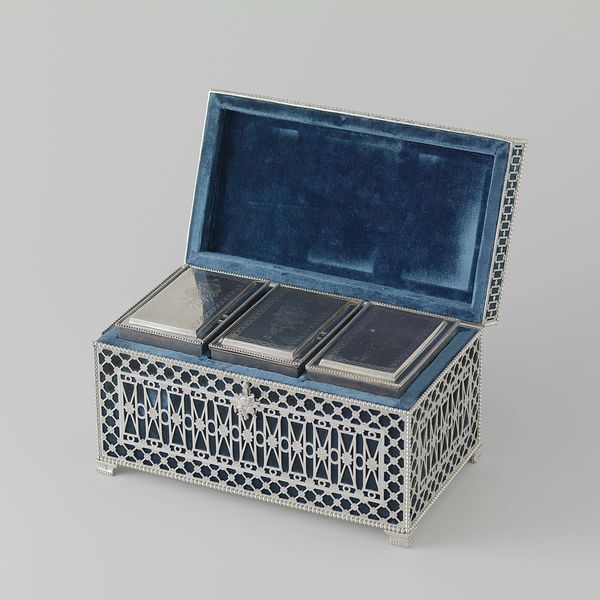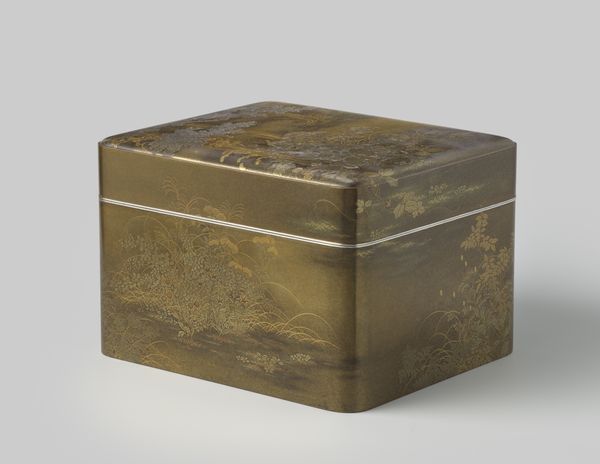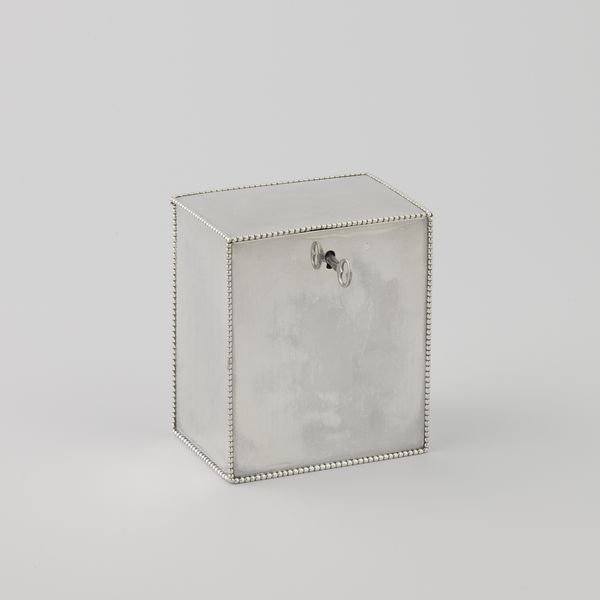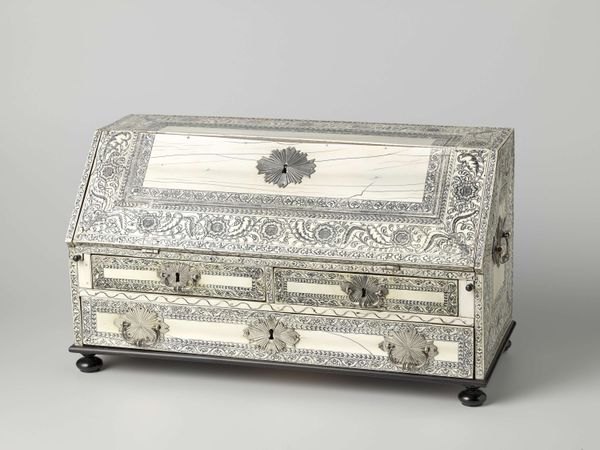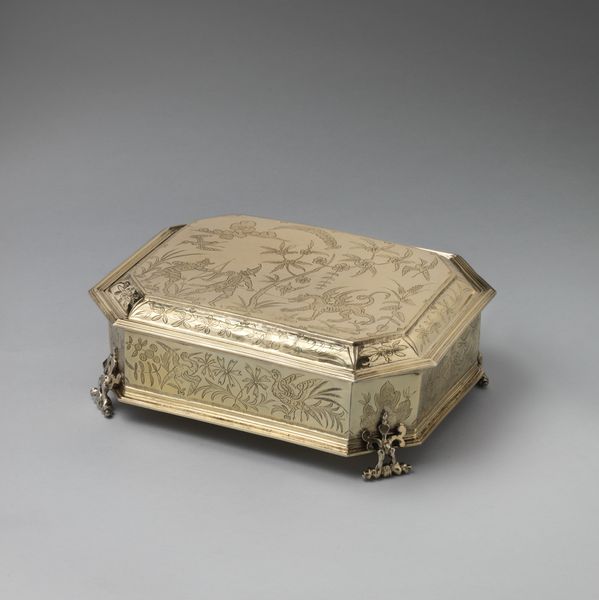
metal
#
neoclacissism
#
metal
#
decorative-art
Dimensions: height 7.6 cm, width 10.7 cm, depth 7.6 cm, weight 617.0 gr
Copyright: Rijks Museum: Open Domain
Editor: Here we have a pair of biscuit containers dating back to 1791. The craftsmanship in metal is just so simple and geometrical. It's Neoclassical. But what strikes me are the mottled marks; they evoke stories. What do you see in them? Curator: Oh, I adore that interpretation! You're right; that tarnished surface whispers of history. It makes me wonder about the hands that once opened these containers, maybe at a lavish party. Think about it – biscuits in 1791 weren't like Oreos; they were delicacies! Each one was a sign of decadence. Does that give you any insight? Editor: It does. Knowing they contained something valuable brings it alive for me. I can just picture the container, full of delicate sweets on some aristocratic table. But looking at it closely it seems almost utilitarian rather than beautiful, a means to an end. I mean it is just a box with four sides and a beaded perimeter... Curator: Perhaps… but look at the delicate way the lid fits! And that perfect geometry celebrates rationality. These biscuits are now sitting safe inside, under the watchful gaze of reason and order. Which for me only gives further evidence to the subtle refinement of everyday life. What more could you ask? Editor: I hadn't considered it in that way. To see it as celebrating daily rationality puts a whole new spin on what I thought was utilitarian. Thanks for shining some light into this for me! Curator: Absolutely, every object has its secrets to whisper if we listen carefully. My pleasure.
Comments
rijksmuseum about 2 years ago
⋮
These two plain containers are decorated only with a beaded edge. Their form is determined by their function. During dessert, biscuits were served from the round container, and 'oublies' (small rolled-up waffles) from the rectangular one. Such silver biscuit containers almost always come in pairs and are a typically Dutch phenomenon. Their shape may have been derived from simpler models made of tin.
Join the conversation
Join millions of artists and users on Artera today and experience the ultimate creative platform.


